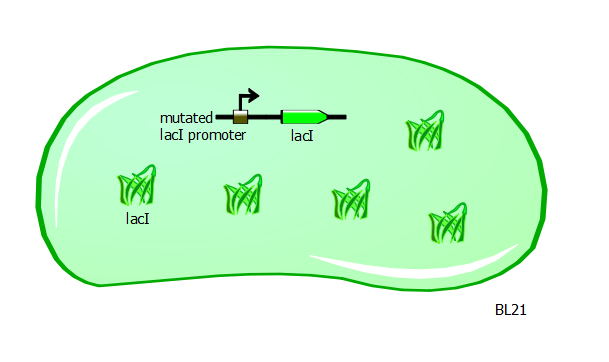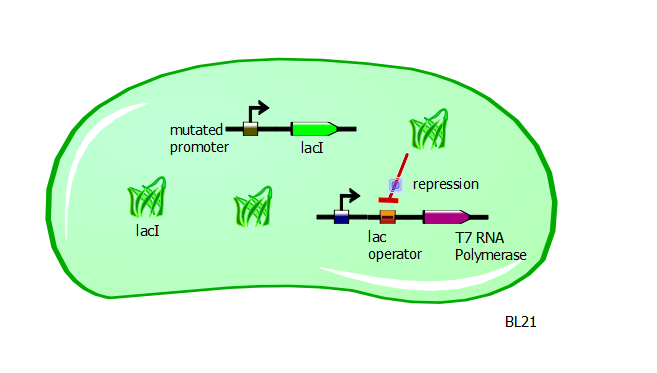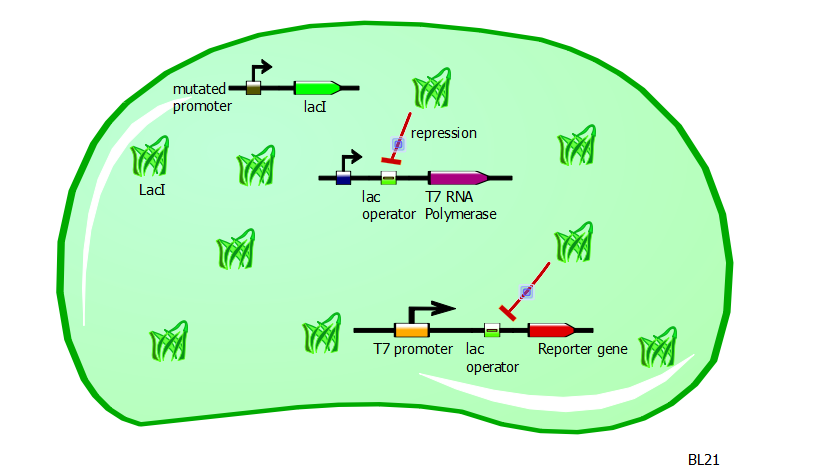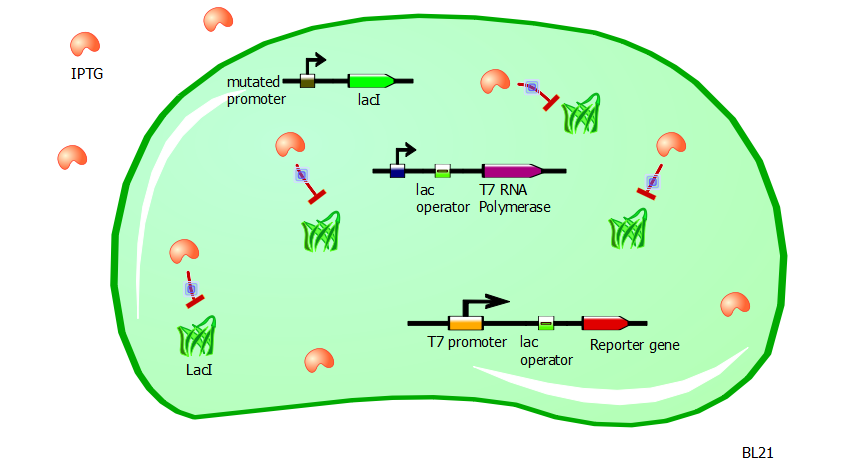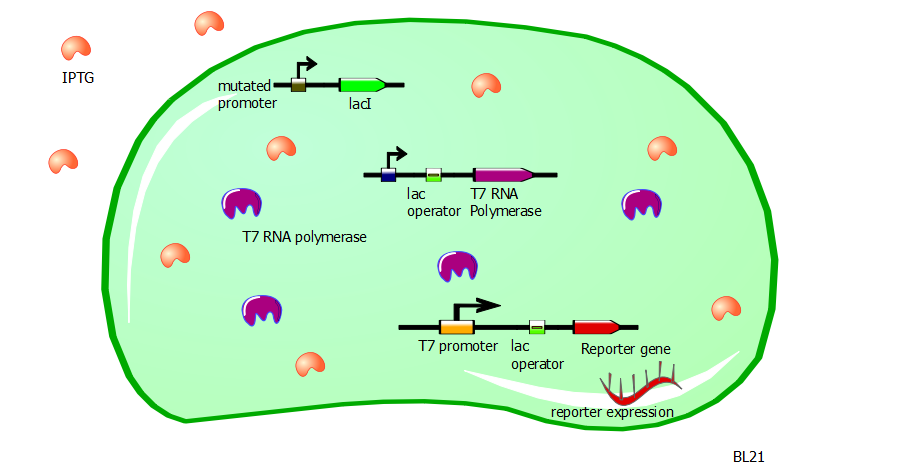EPF-Lausanne/Our Project/T7 promoter variants/lysis/iptg
From 2011.igem.org
| Line 1: | Line 1: | ||
{{:Team:EPF-Lausanne/Templates/Header|title=How IPTG Induction Works}} | {{:Team:EPF-Lausanne/Templates/Header|title=How IPTG Induction Works}} | ||
| + | |||
| + | To use IPTG as a means for testing a reporter expression, we transform the relevant plasmid(s) into BL21 cells. This strain of ''E. coli'' has a mutation in the promoter that is responsible for the transcription of lacI. | ||
[[File:basic_bl21.png|500px|center]] | [[File:basic_bl21.png|500px|center]] | ||
| - | + | This mutation causes the overproduction of LacI protein. LacI is a repressor that binds at the lacI operator sequence, wherever it is present, and represses the expression of any downstream gene. In BL21, there is a lacI operator sequence upstream of the gene coding for the T7 RNA polymerase. | |
[[File:bl21_w_t7rnap_repression.png|500px|center]] | [[File:bl21_w_t7rnap_repression.png|500px|center]] | ||
| + | |||
| + | As a result of the overproduction of LacI protein, the lacI operator sequence is bound by LacI protein which blocks the expression and production of the T7 RNA polymerase. Consequently, the BL21 cells in its natural state contains very few T7 RNA polymerases. | ||
[[File:bl21_w_t7lacreporter.png|500px|center]] | [[File:bl21_w_t7lacreporter.png|500px|center]] | ||
Revision as of 17:42, 21 September 2011
How IPTG Induction Works
To use IPTG as a means for testing a reporter expression, we transform the relevant plasmid(s) into BL21 cells. This strain of E. coli has a mutation in the promoter that is responsible for the transcription of lacI.
This mutation causes the overproduction of LacI protein. LacI is a repressor that binds at the lacI operator sequence, wherever it is present, and represses the expression of any downstream gene. In BL21, there is a lacI operator sequence upstream of the gene coding for the T7 RNA polymerase.
As a result of the overproduction of LacI protein, the lacI operator sequence is bound by LacI protein which blocks the expression and production of the T7 RNA polymerase. Consequently, the BL21 cells in its natural state contains very few T7 RNA polymerases.
 "
"
